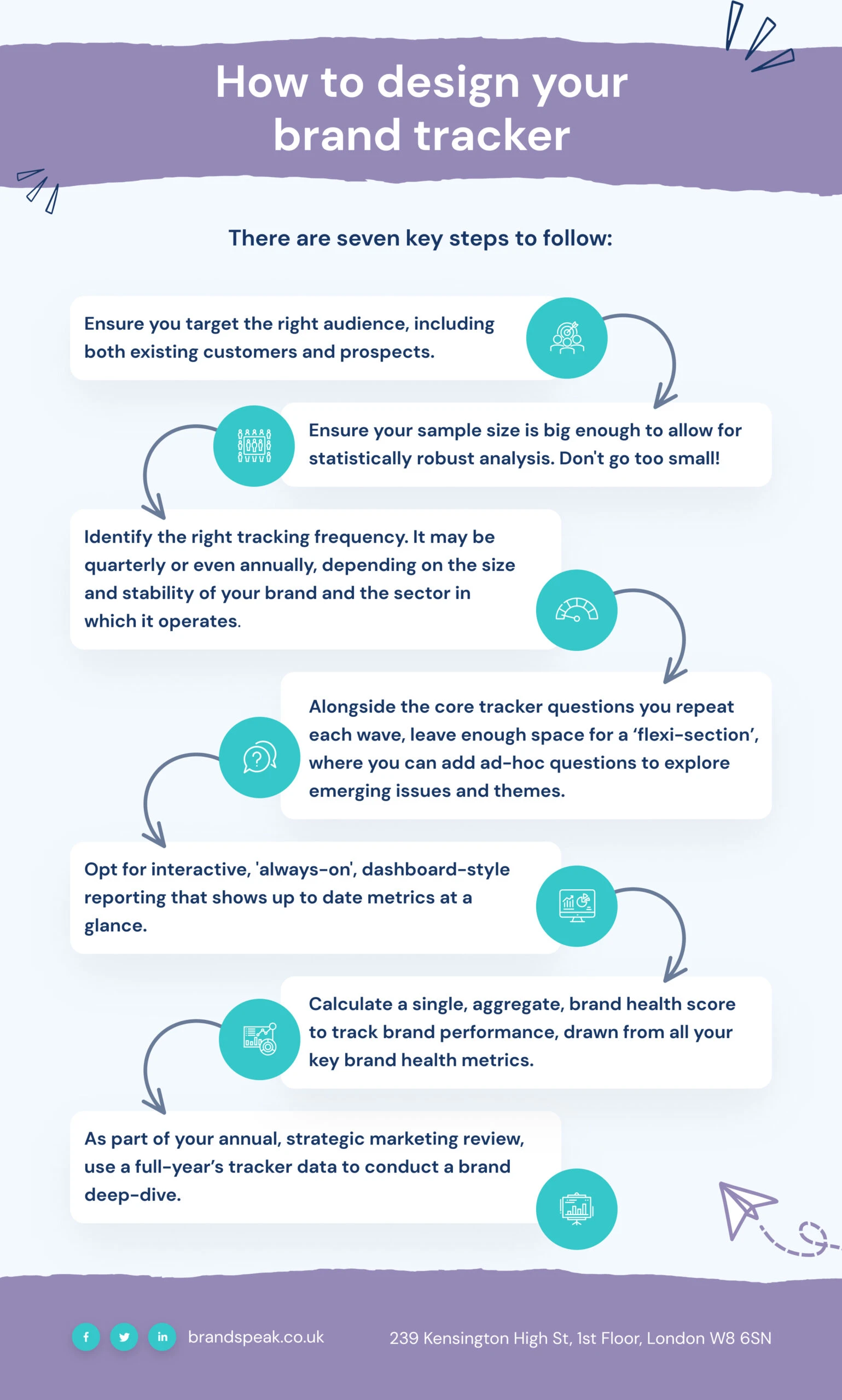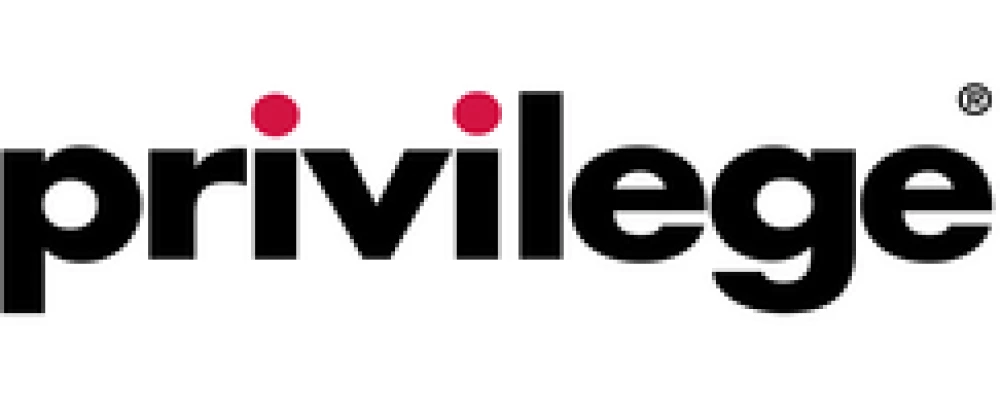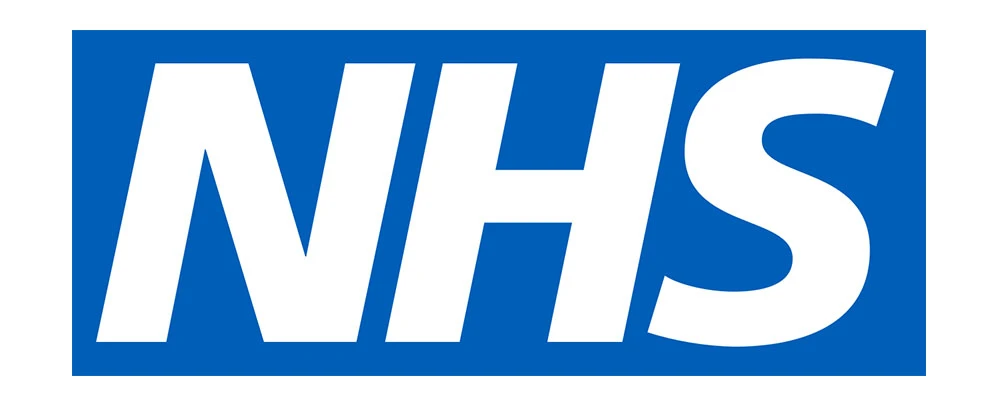Brand tracking is a way to invest in your brand
Your brand is one of your biggest assets. The most effective brands – the ones that we all love the most – deliver real benefits for organisations such as customer loyalty and business growth.
But what makes an effective brand? Typically, top brands have great awareness and recognition. For example, 94% of people worldwide are reported to recognise the Coca-Cola logo.
So, it makes sense to invest in your brand – and because we can’t manage what we can’t measure, one of the key investments must be in brand tracking.
What is brand tracking?
Brand tracking is a way of measuring your brand across a variety of metrics to establish brand equity, as well as other information about brand activities such as communications campaign awareness or pricing perceptions.
Brand equity is a composite measure of the value of your brand, which shows likely brand performance. Brand equity is the sum of the following elements:
Brand awareness and mental availability: Awareness refers to the extent to which consumers are familiar with and recognise a brand. Mental availability references the extent to which it readily comes to mind at time of need or at purchase. You want both to be high so that when the consumer is (for example) looking at a supermarket shelf full of competing yoghurt, cereal or hair dye brands, your yoghurt, cereal or hair dye is the one that they recognise and pick up.
Brand loyalty: The extent to which consumers consistently choose your brand over others. This is important not only in terms of the cost of acquisition and retention of customers but also in terms of the ongoing relationship – loyal customers are more likely to forgive the occasional customer service failure, for example. They are also more likely to spread positive word of mouth about your brand.
Brand image: How do consumers perceive your brand and its associated attributes, such as quality, reliability, and uniqueness? What comes to mind when they think of your brand and does that image reflect the one that your organisation has worked hard to create?
Brand associations: This refers to the emotional or psychological associations that consumers have with your brand, such as (hopefully) feelings of trust, reliability, or nostalgia. Trust is really important: research shows that 75% of people with high brand trust say they will buy the brand’s product even if it isn’t the cheapest, it is the only brand of the product they’ll buy, and they are far more likely to check out a new product from that brand to purchase.
Brand value: This is the sum of perceived benefits and corresponding value that consumers attribute to your brand, based on the extent to which they feel it meets or even exceeds their needs and expectations. Perceived brand value can subsequently have a significant influence on purchasing decisions.
Brand experience: How do consumers interact with your brand? How often do they use it, when, and where? Which are the key touchpoints and how positive is the nature of the brand experience that is delivered?
Need states: this refers to the suitability of your brand in relation to the consumers’ main need states – so what need they need your product or service to fulfil. Going back to yoghurt, for example, some consumers may need a low fat healthy probiotic yoghurt to fulfil their need for physical fitness and wellbeing, whereas others may need a tasty treat with chocolate pieces to fulfil their need for indulgence that is still perceived as healthy.
Your brand tracking study may report on some – or all – of these measures individually, as well as providing an overall brand equity score. It’s important to track these measures over time, as well as tracking sales, so you can see which initiatives have been effective and how to improve your marketing.
A brand tracker will enable you to determine the health of your brand and identify the issues that need to be addressed in order to drive brand growth.
Brand tracking vs a brand tracker
So what is the difference between brand tracking and a brand tracker? Simply that brand tracking is the process, described above, and a brand tracker is the vehicle – most often a quantitative online market research survey – that is used to conduct the brand tracking process. Typically, market research agencies that specialise in brand tracking will offer brand trackers as products. In many cases, these will be standardised ‘black box’; approaches; however, at Brandspeak, we believe in a more flexible approach to brand tracking – for more on this, see our other article on brand performance measurement.
What are the benefits of brand tracking?
Brand tracking should be seen as an investment which enables you to improve your product or service to better reflect your target audience’s needs, expectations and behaviours.
Brand tracking also helps you do the following:
- Measure performance: you need to understand what is happening with your brand in the market and over time – things change and tracking can help you get ahead of the curve.
- Prioritise customer segments: brand tracking can be used to understand the preferences and behaviours of different customer segments. If you have an existing segmentation, you can apply this to your brand tracker to identify segments that show strong affinity, loyalty, or growth potential.
- Evaluate marketing: you can test hypotheses and validate assumptions about your marketing strategies by monitoring brand metrics before and after implementing a specific strategy, and seeing if the impact aligns with your expectations. This should be an iterative process.
- Generate ideas: brand tracking enables you to monitor changes in the market landscape, including shifts in consumer preferences, emerging trends, and competitive activities. This can help you identify gaps in the market where your brand can potentially fill a need or offer a unique value proposition.
- Compare with competitors: by tracking key metrics for your brand as well as competitors’ brands, you can identify areas where you outperform or lag behind the competition. This information helps you understand your brand’s position in the market and informs your marketing strategy decisions.
- Evaluate the impact of marketing communications: brand trackers can help evaluate comms by measuring brand metrics before and after campaigns and by measuring message resonance, recall and relevance.
What are the benefits of brand tracking?
Brand tracking should be seen as an investment in your brand which enables you to improve your product or service in line with customers’ needs and wants.
Brand tracking also helps you do the following:

Brand tracking methods
These days, the majority of brand tracking is conducted via online survey, which is the most cost-effective and fast way of gathering data.
However, surveys aren’t the only way to gain insight about your brand. There is scope to enhance your survey with data from additional sources such as social media, online search data, share of voice and share of spend data, internal sales data and CRM analysis and qualitative research. When you bring together these disparate data sets, it helps you get a more holistic picture of what is happening with your brand.
Brand tracking metrics
A brand tracking survey should contain the following key metrics:
- Spontaneous brand awareness
- Prompted brand awareness
- Brand imagery associations
- Brand personality associations
- Product/service quality ratings
- Brand preference
- Brand purchase including frequency
- Future purchase intent
- Brand usage occasions
- Brand need states fit
- Brand closeness – emotional connection
- Net promoter score (NPS)
In addition to the above, a tracker can also be used to evaluate the impact of a recent marketing campaign. For example, brand awareness, associations and purchase intent scores can be compared before and after the campaign has run, to determine uplift in those areas. Specific questions regarding campaign recall can also be included.
We’ve written in more depth about brand tracking metrics here.
How to design your brand tracker
There are seven key steps to follow:
1. Include the right target audiences – Your tracker should include not only your current customers, but your competitors’ customers too. If appropriate, you should also aim to include a demographic spread that will enable you to identify any age-based differences in relation to your brand.
2. Ensure you have a sample size that allows for statistically robust analysis. There is always a tension between cost and sample size, but choosing too small a sample is a false economy.
3. Determine tracking frequency – Agree on the correct frequency of tracking relative to your brand and sector dynamics. Some brand tracking agencies recommend that you conduct a brand tracker once a year, so you can compare annual results. Others suggest that quarterly is more appropriate, so you can be more aware of changes in the market and pick up on specific campaigns and changes. However, the right answer is the one that works for you and considers the size and stability of your brand and your strategic objectives.
4. Include a ‘flexi-section’ so that you can respond to special circumstances without disrupting the core questioning. Core questioning should remain stable, wave on wave, so you can compare and see trends over time, but the tracker can also be a vehicle for exploring current issues.
5. Implement ongoing and recurring reporting that enables you to visualise trends. Brand managers often use an interactive, always-on’ dashboard that shows key metrics at a glance, whilst enabling them to carry out their own data analysis and quickly export the results for internal sharing.
6. Calculate an overall aggregate brand health score drawn from all the key brand health metrics. This sounds simple but in reality can be a nuanced and complex exercise which involves careful consideration; this will be the key measure that you use to track performance so it is important to get it right. Again, there are no hard and fast rules, other than to consider what is important for your brand and your goals.
7. Carry out annual strategic deep dives using the full year’s data set. Regardless of how often you conduct your brand tracker, an annual review makes sense as part of your wider marketing strategic review. If you are interviewing more frequently than once a year, the aggregate data set will give you a larger base for more detailed analysis.

Five types of brand tracking studies & brand trackers
There are five main types of brand tracking studies to consider:
1. Consumer brand tracking – for brands that sell to consumer audiences. This form of tracking is suitable for any brand involved in the provision of goods or services to the consumer.
For example, broadband suppliers, food, clothing retailers, car manufacturers, package holiday providers and retail banks.
2. B2B brand tracking – for brands that supply other brands, rather than consumers. Brand health is vital for all brands, meaning that it is just as important that it is measured by organisations that specialise in supplying products and services to other businesses, rather than consumers.
For example, car leasing companies, facilities management companies, and organisations that provide insurance for businesses.
3. Pure brand tracking – in contrast with brand and comms tracking, pure brand tracking focuses on brand metrics only and doesn’t use the survey as a vehicle to delve into other areas of insight.
A pure brand tracker will therefore focus on core brand metrics only, like brand awareness, brand associations, brand preference and purchase intent. It won’t include analysis of any particular marketing campaigns.
4. Brand and comms tracking – unlike pure brand tracking, brand and comms tracking includes elements of the brand that relate to marketing communications, such as ad recall or recognition.
5. Always on brand tracking – as the name suggests, ongoing sampling and completion of your brand tracking survey, with the data cut in waves to provide agile and responsive insight when needed.
Reporting on your study
A brand tracker is only as useful if it is actionable. The first step to using your tracker to drive change is to ensure that you have easy-to-understand and accessible reporting. There are several ways you can do this:
- Create a brand health scorecard that reports on overall brand health metrics and the brand equity score. The equivalent to an executive summary when only the headlines are needed.
- An online reporting platform for always-on brand trackers. This enables you to monitor brand health in near time including the provision of easy-to-use data interrogation so that you can ask and answer ad-hoc questions quickly and easily
- A post-wave analysis and presentation that includes a detailed data analysis of the results and answers both core objectives and wave-specific brand questions.
- A strategic, annual deep-dive. An opportunity to look back at the data set over a full year and carry out a much more detailed analysis, usually to answer bigger, more strategic questions and objectives.
How frequently should you carry out brand tracking studies?
For smaller, established brands operating in less volatile sectors, where less-frequent marketing activity is conducted, an annual or bi-annual brand tracking exercise is likely to be sufficient.
But for larger organisations and those operating in fast-moving sectors where there is significant competitor activity or price fluctuation, ongoing brand health monitoring can be essential so that brand issues can be rapidly identified and acted upon.
Measure the ROI of brand building
Measuring the ROI of brand building can be challenging because brand-building initiatives often have long-term effects that are difficult to attribute solely to specific marketing activities – you could argue that all of your marketing investment is a form of brand building.
However, a well-thought-out measure of brand equity represents the intangible value of your brand, including customer perceptions, loyalty, and brand associations.
Measuring changes in brand equity over time can indicate the effectiveness of brand-building efforts. Trackers can help measure ROI of specific campaigns by measuring brand equity before and afterwards. And finally, metrics such as market share, sales and revenue, customer acquisition and loyalty are also indicators of the impact of brand-building activities.
Get expert help with your Brand Tracking
Brandspeak is a market research and brand tracking agency that specialises in B2C and B2B brand tracking. For more information about our services, or to have a chat about the benefits that brand tracking will have for your brand, please contact Mark Bagnall, our Head of Quantitative Research at Mark@brandspeak.co.uk .














